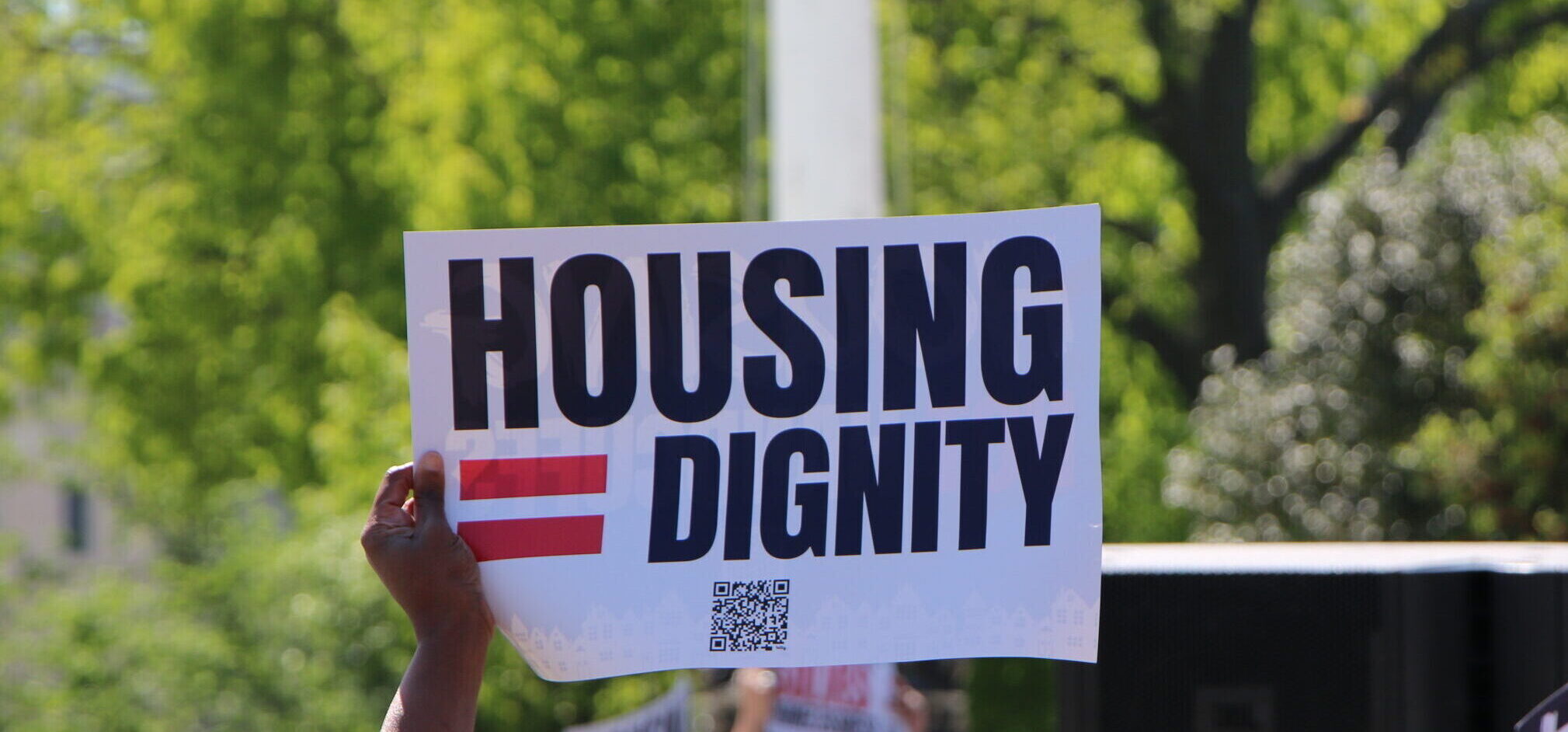


The Problem With “Not”
10/08/2025

By Gillian Gaynair
Try something with me:
Do not think about swimming in clear, turquoise water. Do not think about the jellyfish you see while swimming in clear, turquoise water.
What was in your mind for you when you read those sentences? Did you imagine something other than clear, turquoise water and jellyfish?
Probably not. And that’s the issue with messages telling people what not to do or think or what will not solve a problem. We humans do the exact opposite.
We want our words and stories to stick in people’s heads, but in this moment of crisis — as armed troops take over American cities, police jail and institutionalize homeless people and historic funding cuts to federal housing programs threaten to put more than 170,000 people at risk of homelessness — a lot of the field’s messages focus on what will not work. For example:
- “Arresting people and breaking up encampments will not solve homelessness.”
- “Armed soldiers in our communities will not make us safe.”
- “Being homeless is not a crime.”
- “Homelessness is not a choice.”
The problem is that this approach amplifies the opposition’s framing, especially when presented in isolation, without context.
Many people already think that homelessness is a personal choice or equate crime with homelessness, for example. So when we add a “not,” we unconsciously reinforce the connections. That’s what sticks with audiences, instead of the proven solutions to homelessness and unstable housing that our movement wants people to remember and fight for.
Our Brains on Narrative
Neuroscience and psychology also back this up. Our brains naturally visualize and focus on what’s most explicit in the message — “armed soldiers in our communities” — and not what’s wrong with the image or what the solution is.
Another problem with “not” messaging is that it isn’t persuasive. We need our narratives to inspire and inform people — and over time, shift how they think, feel and act. Simply telling our audiences that “institutionalizing people experiencing homelessness does not solve our housing crisis” doesn’t offer a solution or any hope, for that matter.
Instead, we could say: “People experiencing homelessness have a better chance at rebuilding their lives when we get them into stable housing that provides support services, like mental health counseling, instead of forcing them into institutions with nowhere to live once they get out.”
What works will stay with people (supportive housing), rather than what isn’t working (forced institutionalization).
Breathe, Resist, Reframe
So what to do, especially in the midst of a crisis when our anger and frustration feel constant? First, take a breath. Then, resist the urge to go on the defense and put a “not” in front of your talking point. Instead, reframe by leaning into the tenets of narrative that we at the Lab always recommend:
- When you can, lead with values
- Name the problem
- Emphasize a solution or solutions that people can envision
Let’s go back to some of our examples above.
Instead of: “Arresting people and breaking up encampments will not solve homelessness.”
- Say: “Regardless of our background or income, no one in America should be sleeping on the street. This administration is making homelessness worse and burdening taxpayers by arresting and jailing people in encampments. A better, more cost-effective approach is to get people into safe, stable housing.”
Instead of: “Armed soldiers in our neighborhoods will not make us safe.”
- Say: “We didn’t ask for armed national troops in our streets causing fear. The real solution to make our communities healthy and safe is making sure everyone has housing that’s affordable and the services they need to rebuild their lives.”
Instead of: “Being homeless is not a crime” and “Homelessness is not a choice”
- Say: “Most people become homeless because housing costs are too high, there aren’t enough places that are affordable for most working people and a lot of us are one job loss or critical illness away from not being able to pay the rent or mortgage.”
1828 L St. NW
Suite 300
Washington, DC 20036
© Copyright 2025 Privacy Policy